Eduardo Alegría: “We use stem cells extracted from the patient’s leg to form the heart”
What is cellular cardiomyoplasty?
It is based on the introduction of specially stimulated cells to fulfill the function of necrotic or damaged tissue of the heart. These cells are removed from the patient who has suffered a heart attack, they are stem cells from the leg muscle that reproduce in a breeding medium with specific enhancers before their introduction.
What benefits do you have and who can benefit from this technique?
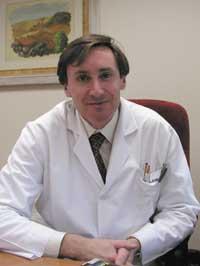
Now the researchers are working on the technique. Heart disease, especially heart attacks, has had very good results in affected animals. And thanks to these animal studies, two aspects have been clarified: one, the capacity of the muscle cells injected into the spot surrounding the infarction, both to convert them into muscle fibers of the heart and to replace those affected; and another, in the medium term, that cellular cardiomyoplasty improves the systolic and diastolic function of the heart.
In the case of humans only 20 of this type have been operated worldwide, so there is still not enough data to assess the results. Therefore, today we can only say that it is a technique that has given encouraging results in research. Theoretically it can be beneficial for anyone with heart muscle dysfunction, such as patients with myocardial infarction or extended cardiomyopathy.
What is then the novelty of the case that you have made known?
First, he was the first patient in Spain to apply this technique. In fact, in the clinical study authorized by regulatory agencies, we must perform a surgical intervention on 12 patients, this being the first.
On the other hand, we have used a special technique for the proliferation of muscle cells. The benefits of this technique are especially the greater number and purity of cells, as well as the significant decrease in patient reactions after injection.
Can you explain the main difficulties of the technique?
The greatest difficulties are focused on the growth technique, as researchers specialized in cell culture and a laboratory with adequate infrastructure are needed. However, when mastering the technique is more expensive than difficult. The other aspect that technically requires much attention is the cellular implant, which at the moment must be performed in the intervention of coronary aortic vaccination, so it is not an operation of any type.
As for stem cells, why have you chosen leg muscles?
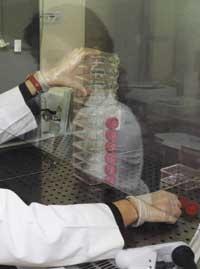
Stem cells or skeletal muscle satellites reproduce easily and have a great ability to supply other muscle fibers, including heart muscle. Damaged heart tissue is ultimately a muscle, so selected cells seem to be a good source. In addition, most research with experimental animals has used muscle stem cells, so there is more experience than with cells of another origin. The investigations that are being carried out with cells extracted from the bone marrow and other organs are in their beginnings and will not be used in humans until they achieve good results in animals.
In addition, cell administration from the large thigh muscle is very simple, only a small incision with local anesthesia is necessary.
How are stem cells removed from muscle cells? What steps require more attention?
The initial process of the muscle is the removal of contaminating cells, mainly fibroblasts, and the maintenance of the growth medium until obtaining the number of cells needed to perform cardiomyoplasty. In this sense, we believe that it is the contribution of the technique that we have improved.
How do you ensure the proliferation of cells injected into a necrotic tissue of the heart?
The cells are injected next to the necrotic tissue. Its insertion into the necrotic zone would be to leave it in the desert, where they would die for lack of food. Despite achieving a certain proliferation, the main process is the cellular separation to obtain heart cells with contractile capacity, which requires an enabling environment. On the other hand, biopsies made to research animals give us certainty, since they have tested various techniques and use the best results.
Undoubtedly, what you have just done is a great step forward. However, what is the next step in cardiology?
In these top-level scientific research, it is not advisable to play as a prophet, but every step should be taken with care and rigor. If it is demonstrated that the implantation of myocardial cells is effective, the injection into the skin would be studied by indirect technique, without surgical intervention.
In theory, the benefit of myocardial cells could extend to other types of cells, such as endothelial cells, to form heart arteries. And although today it is almost sci-fi, it is possible that someday totipotent cells are introduced through an intravenous injection, so that they move to the necessary organ and separate into it the necessary cells.
What other studies are you working in the department of cardiology?
In our department we have several lines of research, both clinical and basic. In the clinical field, in addition to participating in important intercenter investigations, we have specific studies on new modalities of three-dimensional echocardiography by contrast of phases. In addition, retrofraction is being studied in some myocardial and coronary diseases, especially for heart transplants and rejection detection.
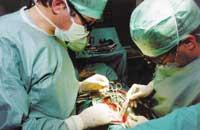
Another major research by the Department in recent years is the cardiovascular response to the effort, in which we have obtained relevant scientific results. And to cite a third line, we are investigating different surgical and medical pathways to treat extreme ventricular dysfunction.
On the other hand, in experimental research, experimental atherosclerosis is a very productive line in the dwarf pig model. It is studying the factors that influence the initial process of formation of atheroma plaques, such as lipid accumulation, and pharmaceutical treatments are being tested to prevent them.
As for cell growth, apart from cardiomyoplasty, we are implementing this technique in first order myocardial alterations, although it has not yet developed.
Finally, we would like to know your opinion on the ethical debate on the use of stem cells for therapeutic purposes.
I believe that the use of embryonic cells is not ethically justified. There are no ethical or scientific problems for the use of stem cells extracted from adult tissues. On the contrary, there are important scientific impediments to the use of embryonic cells: the formation of tumors, the difficulty in controlling the separation process and the impossibility of personal use (except in therapeutic cloning, in which the economic ethical problem is added). Unlike embryo stem cells, adult stem cells do not produce tumor-looking teratomas or malformations, control of the separation process is relatively simple and can be used in autologous therapy, i.e. for healing.
Joseba Aranzabal: “machines cannot fully replace the functions of healthy organs”
Transplant data places transplant coordination in the ACBC at levels similar to or higher than the best in the world. How has it been achieved?
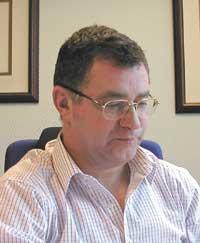
First, in the CAPV we have a strong coordination plan for transplants, in which there is a coordinator in each hospital, followed by the territorial coordinators who are concentrated here in the transplant coordination office. From here also our relationships with other communities are directed. All this has not been done overnight: in the State we are pioneers in coordination, since we have worked since the late 1970s.
Second, social awareness is higher than in other European countries. In CAPV 9 out of 10 families say yes they are organ donors; in the rest of Europe only 6-7 out of ten are favorable. Why is there less negative? On the one hand, because donor associations have done enormous work to make people aware of the need for transplant organs and on the other, because the donation process is totally transparent. The people here know that the organ of the deceased relative will be given to those who need it most and not to those who have paid the most money.
Finally, because judges and legal processors and the Ertzaintza are in favor of facilitating the problems surrounding the donation process. In fact, carrying the transplant organ opens all doors and the one who does it, for not wasting time, has priority everywhere.
With all this, the Basque model is a benchmark in several countries around the world: Italy, South America, Sweden, Australia...
What have been the main advances of recent years?
The most important advance has been in immunosuppressants. Cyclosporine discovered in the 1980s has significantly improved patient survival and well-being. Currently we have new immunosuppressants that increase this improvement: rapamycin, traquolimus... Monoclonal antibodies are also used with which rejection has been largely avoided.
Although the number of donors is higher than elsewhere, organ failure remains a serious problem, isn't it? What options are there to face it?
The truth is that there are not too many options. While waiting for the right organ, patients remain with treatments such as dialysis, but machines cannot fully replace the functions of healthy organs. In countries with a small number of donors, total or partial organ transplants from living donors are sufficient, i.e. they give one in two kidneys for transplantation, or part of the liver... In the US, for example, 30-40% of kidney transplants are performed with a live donor (usually provided by a relative), while in northern Europe it is between 20-30%, versus 1-2%. Fortunately, we have the way to meet our needs with the organs of the dead.
In the near future will we have artificial organs? For example, the artificial heart Abiocor recently appeared.
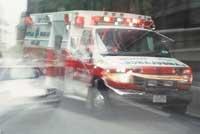
I think the use of artificial organs is utopian. The complexity of the organs must be taken into account: the kidney consists of a million nephrons, and the liver is a perfect cleansing machine, and the lungs must be said!
The heart is a clear example. In short, it is a bomb. Therefore, more than one artificial model has been developed, but they have not obtained good results. The last has been the aforementioned Abiocor. And how many serious complications have you caused? Clotting problems, for example, of everything. Because it is not easy.
Is animal organ transplantation to humans also science fiction?
For now yes. On the one hand, the problem of rejection has not been overcome and, on the other, there is the risk of transmitting viruses that do not affect humans themselves. However, I find it easier for animal organs to be used in the future than complete artificial organs.
In my opinion, the news that this will soon be done and the other hurts more than favor. People can see these advances very closely and think that the need for organ donation has diminished. However, today, the best solution is the transplant of deceased organs, and every day we should try to improve the results.
Finally, and in terms of research, could you explain what they consist of now?
Currently, the most important research is being carried out in the tissue bank. Cultures of chondrocytes (cartilage cells) and keratocytes (cutaneous) are almost prepared, which can be offered at the end of the year to traumatologists and dermatologists for use in surgical operations.
Buletina
Bidali zure helbide elektronikoa eta jaso asteroko buletina zure sarrera-ontzian











